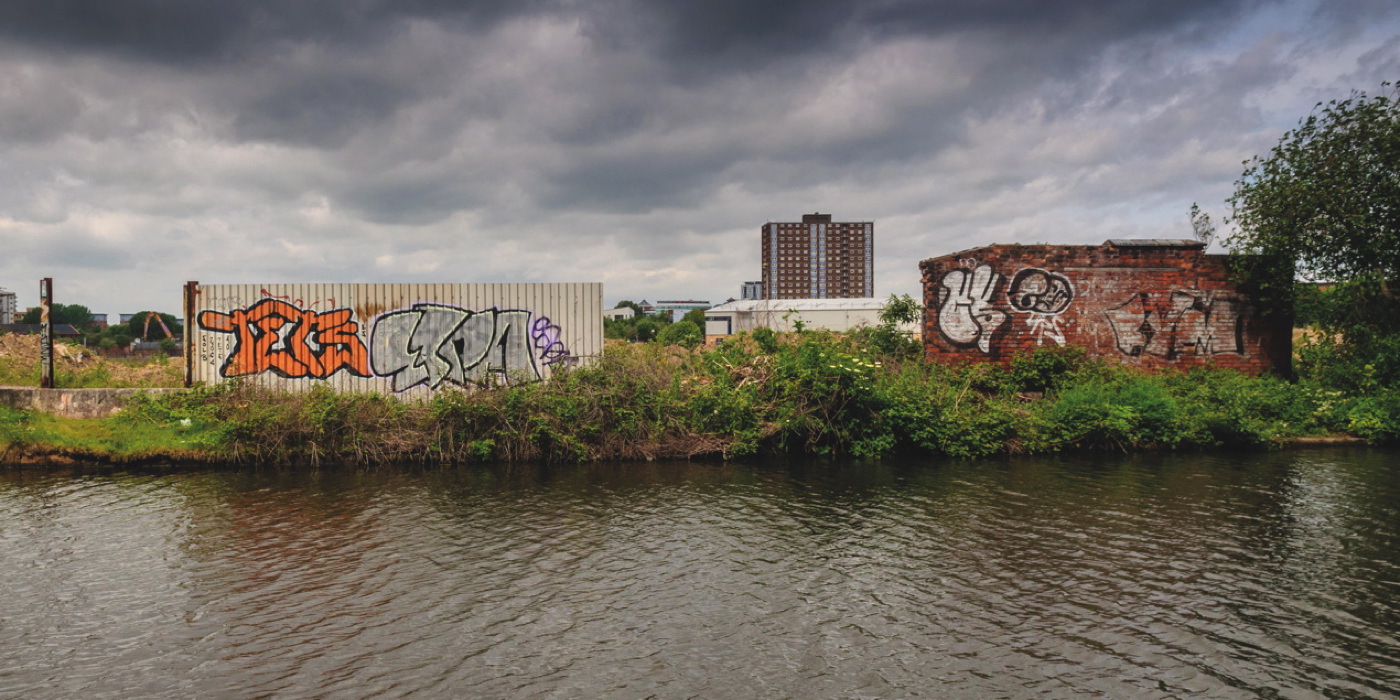Island in the city
Manchester’s Pomona Island sparks debate
Manchester celebrates its local wildlife at the Festival of Nature on 29 July but one of the city’s unofficial nature reserves is disappearing.
Opinions on the future of Pomona Island are divided. Although some residents are campaigning to preserve the natural habitat, others believe the area is a key location for sustainable development that could help preserve greenbelt land across Manchester.
Pomona is a faux inner-city island, created by canals and straddling the borders of Manchester, Salford and Trafford.
Despite suggestions that Pomona could become the “Eden Project of the north”, 3,000 homes are planned for the site by owners Peel L&P and the first development, Pomona Wharf, is already complete.
Although the new Manchester Waters development is set to completely alter the landscape, Peel L&P recently published a report outlining how its projects will support biodiversity and put more back into the environment than they take.
The site has been split into 12 development plots – eight for flats, two for retail and leisure, and one for commercial business.
Neil Baumber, director of development for residential at Peel L&P, said: “Manchester Waters includes the regeneration of a former 26 acre brownfield dockland site. The site is allocated as a strategic location within Trafford Council’s local plan and earmarked for sustainable development.
“The Pomona Island Masterplan, approved by Trafford Council, the Cornbrook Hub Regeneration Framework and Manchester City Council have set out the development design guidance for this site.”
The Save Pomona campaign was launched in 2012 to encourage considerate use of the land and preserve the heritage of the area. Once a popular entertainment hotspot in the 19th century, the site was also a dockland before it became the wasteland it is today.
The campaign has held a number of events, including nature walks and a festival, and over 1,600 people have signed its petition.
“The mission of the campaign is to encourage alternative land use of at least some of the old Pomona Docks to respect the heritage and the ecology of the site, especially the birds and flora,” said James Walsh, chairman of the Manchester Ship Canal World Heritage Group.
“We are still in it to win it. I hope that something of ecological value can still happen – perhaps a nature reserve on some of the land or habitat enhancement that gives the sand martins somewhere to nest.”
Luke Blazejewski, a nature photographer from Salford, collaborated with Walsh and others on Fruitful Futures: Imagining Pomona, a book celebrating the island.
“This green space could have been a globally significant urban park, and a powerful statement of Manchester’s commitment to fighting climate change and protecting green spaces,” said Blazejewski.
“Unfortunately, the city chose more apartments and financial growth over the natural world and not for the first time.”
Blazejewski believes that the building work has pushed most of the wildlife away, especially as the development expands to the water’s edge.
“To the untrained eye, brownfield sites do look like wastelands – an old dilapidated building that has been reclaimed by nature,” he said. “But if you look past the industrial mess, you can see a kind of nature we don’t have in our parks – untamed, wild and managed by no one other than itself.”
However, Trafford Council believe that prioritising development on city centre brownfield sites will protect greenfield land in the long term. It says Pomona can help meet necessary accommodation needs without building on undeveloped land in the city’s greenbelt.
A spokesperson for Trafford Council said: “The plans for more accommodation at Pomona Island make a significant contribution to meeting our housing needs.
“The former industrial area is in a central location with excellent transport links and has been identified as a strategic development location in the council’s planning policies for many years.”
Pomona has attracted many fans over the years with its green space and variety of wildlife. Over 100 different species have been recorded on the site, including endangered birds.
First opened in 1845, Pomona Island was once a countryside retreat with botanical gardens and the Royal Pomona Palace. The site became an industrial dockland until 1973 and it remained abandoned until development began.

Leave a reply
Your email address will not be published.